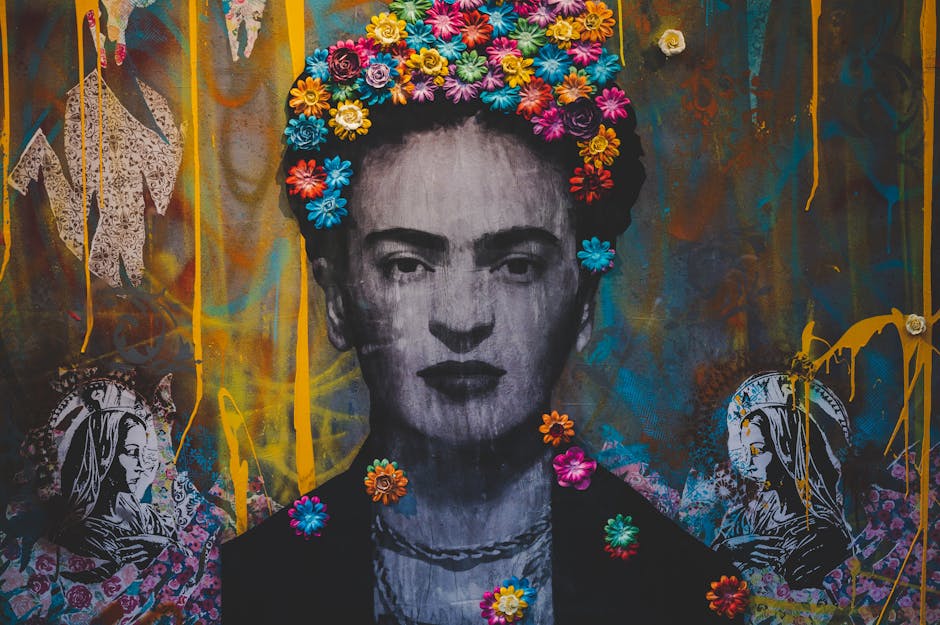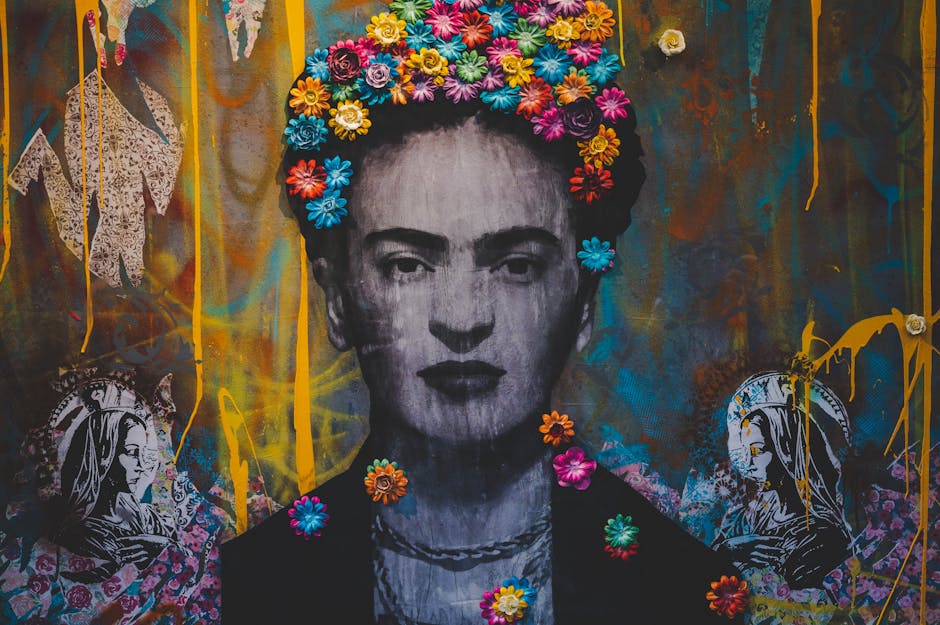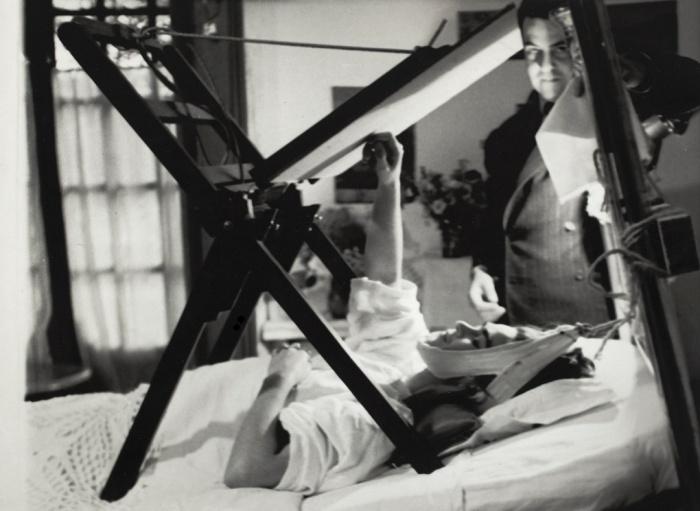Frida Kahlo's life and art are a journey through personal pain, cultural identity, and self-expression. From her early years in La Casa Azul to her relationship with Diego Rivera, Kahlo's experiences shaped her distinctive artistic voice. Her work offers an honest portrayal of her struggles and triumphs.
Frida Kahlo's Early Life and Influences
Magdalena Carmen Frieda Kahlo Calderon was born in La Casa Azul, her family home in Coyoacan. Her father, Wilhelm Kahlo, a German photographer, introduced young Frida to the artistic world. Her mother, Matilde Calderon y Gonzalez, was of mixed Spanish and indigenous descent, contributing to Frida's multifaceted heritage.
At six, Frida contracted polio, leaving her with a limp. She found solace in her father, who introduced her to European literature and philosophy. Her mother, although loving, leaned heavily on religious rituals, which often clashed with Frida's evolving worldview.
Frida attended the National Preparatory School, where she was one of only 35 girls admitted. Initially aspiring to be a doctor, she immersed herself in biology and anatomy. A chance encounter with Diego Rivera, who was working on a mural at her school, left an impression on Frida.
In 1925, Frida's life changed dramatically. A bus accident left her with multiple fractures and a metal rod impaling her pelvis. During her recovery, a special easel and mirror allowed her to paint, reflecting her new reality and inner turmoil. Her initial works, often self-portraits, became windows into her soul, capturing pain and resilience.
Frida's brush began to narrate her health battles and emotional upheavals. Her broken body became both canvas and muse. As she painted, she transformed her suffering into a visual diary. The interplay of bold colors and stark symbols spoke to anyone who had felt the sting of adversity.
The young Kahlo channeled pain into her art. Her father's mentoring and her traumatic experiences converged, setting the stage for a lifelong journey of self-expression. Each brushstroke brought her closer to becoming one of Mexico's most iconic artists.
The Evolution of Frida Kahlo's Artistic Style
Frida Kahlo's artistic journey is marked by her distinctive style and use of symbolism. Her early works echo authenticity, rooted in personal experiences and Mexican culture. These initial pieces often depicted self-portraits that served as a canvas for her inner turmoil and physical pain.
Initially, Kahlo's art was influenced by Mexican folk art traditions. Her use of bold colors and symbolism drew from indigenous Mexican culture. The vibrant hues and precise detail were reminiscent of retablo paintings, small devotional pieces popular in Mexico.
Her relationship with Diego Rivera, rekindled in 1928, influenced the progression of her artistic style. Rivera brought a fresh perspective that markedly influenced Kahlo's paintings. While Rivera's murals focused on social and political themes, Kahlo's work remained personal. However, the depth of her symbolism and narrative intricacy grew.
Kahlo's time in the United States also played a role in her artistic development. Her painting "Self-Portrait on the Borderline Between Mexico and the United States" (1932) encapsulates her ambivalence toward American industrialism and pride in her Mexican heritage.
Returning to Mexico post-1933, Kahlo's artwork took on greater symbolic depth and emotional intensity. Her paintings from this period, including "The Two Fridas" (1939), reflect sophisticated symbolism that intertwines personal anguish with broader existential themes.
In her later years, as her health declined, her paintings became more intimate and focused on her physical and emotional suffering. Works like "Broken Column" (1944) depict her vulnerably, exposed with a crumbling column for a spine, nails piercing her skin.
Throughout her life, Kahlo's style evolved, but certain elements remained constant: her emotional honesty, distinctive use of symbolism, and commitment to portraying her personal reality. Her work was always raw and autobiographical, using her own image and experiences to explore larger themes of pain, identity, and resilience.

Themes and Symbolism in Frida Kahlo's Art
Frida Kahlo's work is woven with themes of pain, identity, and duality, drawing from her personal experiences and Mexican cultural heritage. Her art serves as a reflection of her inner world and life's chapters.
Key Themes in Kahlo's Work:
- Pain: A prevalent theme, often depicted through physical representations
- Identity: Exploration of her multifaceted cultural and personal identity
- Duality: Representation of contrasting aspects of self and society
- Mexican Culture: Incorporation of indigenous symbols and traditions
- Feminism: Challenging traditional roles and expectations of women
Pain is vividly portrayed in Kahlo's work. "The Broken Column" (1944) illustrates this theme, with Kahlo's body represented as a crumbling column, her spine shattered and split open. The nails piercing her flesh echo the persistent pangs she faced daily.
Identity, particularly its multifaceted nature, is another cornerstone of Kahlo's oeuvre. "The Two Fridas" (1939) explores this theme through a dual self-portrait, splitting herself into two personas: one in traditional Tehuana dress, linking her to her indigenous roots, and the other in European-style dress, signifying her mixed heritage.
Her relationship with Diego Rivera influenced Kahlo's thematic focus. In "Diego and I" (1949), Kahlo reveals Rivera's impact on her psyche, with his face embedded on her forehead, emphasizing their intertwined lives.
Kahlo's exploration of Mexican identity and feminism is another vital aspect of her work. Her paintings are filled with symbols and imagery rich in Mexican cultural references. "Self-Portrait on the Borderline Between Mexico and the United States" (1932) juxtaposes industrial America with folkloric Mexico, highlighting her pride in Mexican traditions.
In "Henry Ford Hospital" (1932), Kahlo confronts her struggles with fertility. The painting captures a post-miscarriage scene where Kahlo lies bleeding on a hospital bed, surrounded by symbolic objects representing her pain and loss.
"I paint self-portraits because I am so often alone, because I am the person I know best." – Frida Kahlo
Kahlo often used animals as extensions of her personality or emotional state. Monkeys, hummingbirds, and black cats frequently appear in her self-portraits, each symbolizing different aspects of her identity and emotions.
Through these symbols, Kahlo transcended personal pain to touch on universal themes. Her works are not just self-portraits but reflections of human experiences, exploring suffering, identity, and resilience. Her art remains an enduring examination of what it means to be human, illustrating the strength to turn pain into beauty and trauma into power.

Frida Kahlo's Legacy and Cultural Impact
Frida Kahlo's recognition evolved significantly during and after her lifetime. Initially overshadowed by her husband Diego Rivera in Mexico, her unique art gradually captured international attention.
Kahlo's first solo exhibition in 1938 at New York's Julien Levy Gallery was well-received. Despite being associated with Surrealism by figures like André Breton, Kahlo maintained, "I never painted dreams. I painted my own reality." This stance highlighted her distinct artistic vision.
Her time in the United States broadened her recognition, though critics sometimes focused more on her identity and personal life than her art. Nevertheless, exhibitions in New York and Paris laid the groundwork for her future acclaim.
After her death in 1954, Kahlo's cultural significance grew enormously. Her unibrow and mustache became symbols of defiance against gender norms, her self-portraits feminist icons, and her vibrant works touchstones of Mexican identity.
Kahlo's art resonates with many due to its unflinching portrayal of personal pain and use of vivid symbolism. Her work continues to draw massive crowds at exhibitions, like the 2017 "Mexico 1900-1950" show at the Dallas Museum of Art.
Kahlo's Impact Beyond Fine Art
- Pop culture icon
- Inspiration for fashion, music, and literature
- Image on merchandise worldwide
- Subject of numerous biographies and films, including the 2002 biopic "Frida"
In Mexico, Kahlo is revered as a symbol of strong femininity. Her home, Casa Azul, is now a museum and pilgrimage site for global admirers.
Modern artists frequently cite Kahlo as an inspiration, drawn to her fearless approach to self-portraiture, cultural symbolism, and exploration of pain and identity. Her work has inspired various creative fields, transcending her chosen medium.
Kahlo has become intrinsically linked with discussions of feminism and female identity. Her portrayal of intimate experiences continues to spark dialogues about motherhood, body image, and resilience.
In essence, Frida Kahlo's legacy is multifaceted. She's a Mexican icon, a feminist symbol, and an artist whose deeply personal work has forged an enduring, global impact.

Frida Kahlo's Personal Life and Relationships
Frida Kahlo's personal life was as vibrant as her artwork, with her marriage to Diego Rivera at its center. Their relationship was marked by love, betrayal, and artistic synergy. Rivera, 20 years her senior, was an established muralist when they married in 1929.
Infidelity plagued their union, with Rivera's affairs causing Kahlo significant pain. His relationship with Kahlo's sister Cristina was particularly devastating, driving Kahlo to temporarily leave their home. These experiences often found expression in her art.
Kahlo sought solace in her own affairs with both men and women. Notable liaisons included:
- Russian revolutionary Leon Trotsky
- Sculptor Isamu Noguchi
These relationships were a form of reclaiming her identity amidst marital turmoil.
Despite their struggles, Kahlo and Rivera's bond remained strong. They divorced in 1939 but remarried in 1940. Their relationship, while tumultuous, was grounded in mutual respect and artistic admiration.
Friendships with other artists and intellectuals enriched Kahlo's life and influenced her art. Her connection with André Breton brought her work to European audiences, while friendships with Pablo Picasso and Marcel Duchamp expanded her artistic horizons.
Kahlo's close friendship with photographer Tina Modotti was particularly significant. Modotti provided support and guidance through artistic and political landscapes.
Kahlo's Personal Experiences in Her Art
| Painting | Personal Context |
|---|---|
| "Self-Portrait with Cropped Hair" (1940) | Response to her relationship with Rivera |
| "The Two Fridas" (1939) | Explores self-division during their divorce |
These paintings transcend mere autobiography, touching on universal themes of identity, betrayal, and self-understanding. Kahlo's ability to transform her personal world into relatable art cements her legacy as both an artist and a symbol of the human spirit.
Frida Kahlo's legacy is a testament to the power of personal storytelling in art. Her ability to transform her own experiences into universally relatable themes continues to inspire and connect with audiences worldwide. Through her vivid self-portraits and symbolic imagery, Kahlo remains a powerful symbol of resilience and authenticity.1
























